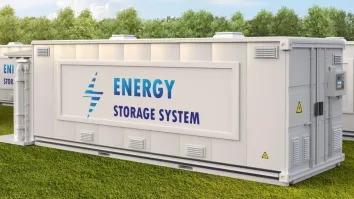Asia-Pacific’s offshore wind power ambitions look bright
With offshore wind projects set to reach $60.9b by 2030, GWEC expert sheds light on challenges that may slow down the momentum.
As the world races towards cleaner and more sustainable energy solutions, the offshore wind sector in the Asia-Pacific (APAC) region is emerging as a key player. Recent estimates suggest that the annual capital expenditure for offshore wind projects in APAC will surge to a staggering $60.9 billion by 2030.
At present, China bears the dominant role in wind power development in the region with a much more rapid growth compared to Europe, according to Mark Hutchinson, director for Asia at the Global Wind Energy Council GWEC).
“The offshore wind sector in Asia is growing quite rapidly. It’s currently dominated by China. And just as a give you some scale, China has installed roughly 30 gigawatts of offshore wind in the last five years,” Hutchinson told Asian Power.
That offshore wind capacity is already equivalent to what Europe has achieved in two decades, he pointed out.
“But I think those don’t really paint a clear picture. Because the growth in the offshore wind industry is quite strong,” he added, citing challenges that have delayed actual power generation.
As China leads the way into this burgeoning industry, Taiwan has taken strides as well with nearly 2 GW, whilst Japan and Korea are making early forays into the sector with capacities ranging from 100 to 200 megawatts.
Whilst highlighting this positive trajectory of the industry in APAC, Hutchinson stressed that although numerous projects are in various stages of development, the complex nature of these undertakings — including their high capital costs and lengthy construction times — result in a time lag between conception and operation.
“The challenge is that it takes six to eight years from the project’s inception to actual operation… Plus, you’re building them out in the middle of the ocean, so these are some challenges to overcome,” he explained.
“But these have been overcome in Europe, and they will be overcome in Asia,” he added.
Hutchinson said there are also several challenges that hinder the realisation of ambitious offshore wind targets set by regional governments, especially regulatory bottlenecks that impede progress.
“Ensuring that you deal with things like marine mammals, birds, that you deal with local fisheries and coastal communities, getting your EIS done, all of these things take quite a bit of time and effort,” he noted.
Add to that, having to grapple with supply chain disruptions triggered by unforeseen events like the COVID-19 pandemic.
The GWEC directed underscored that streamlining these processes, as exemplified by Korea and the Philippines’ “one stop shops” for permits, is crucial to facilitating timely project execution.
On the side of power transmission, he emphasised the significance of the grid readiness for offshore wind projects and its impact on project execution.
“The grid, for example: We did a survey of our offshore members in the Philippines. And the number one concern among the developers there was the grid... if the transmission system is not ready, that is a major issue. And it’s not just the Philippines, it’s almost every country in the world,” said Hutchinson.
This leads to the importance of careful planning to ensure that grid enhancements align with project timelines. Hutchinson set as an example the expansion of port facilities, which is pivotal for managing large offshore wind components like towering turbine blades.
In terms of discussing the role of investments in driving offshore wind expansion, Hutchinson clarified that capital is not the limiting factor.
“Well, first of all, there is absolutely plenty of money today, to finance the projects that are being planned... so, there’s no shortage of capital. What there is a shortage of is projects that are ready to be financed,” he told Asian Power.
In his expert opinion, the challenge lies in creating projects that are “bankable” and the government plays the crucial role of establishing an enabling environment to speed up the process.
“The governments just need to kind of remove the bottlenecks, and pass more enabling policies and regulations so that these projects can get online and then or can be bankable, and then they will get financing and it will come online,” Hutchinson said.
Given the immense potential of the offshore wind sector in Asia Pacific, persistent challenges should not be discouraging, especially since the blueprint for success can be gleaned from Europe’s accomplishments.
Hutchinson’s reminder is that the path forward involves aligning governmental commitments with practical policies, fostering grid modernisation, and enhancing port and supply chain capabilities.
With these efforts, he believes the region can fulfill its promise as a major offshore wind powerhouse, ushering in a greener and more sustainable energy future.
For more insights and news on Asia’s energy landscape, visit asian-power.com



















 Advertise
Advertise






